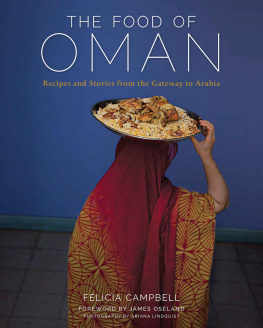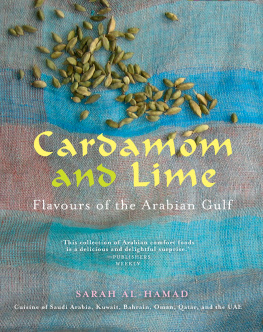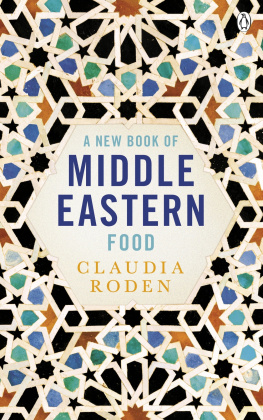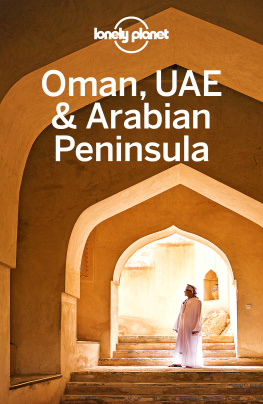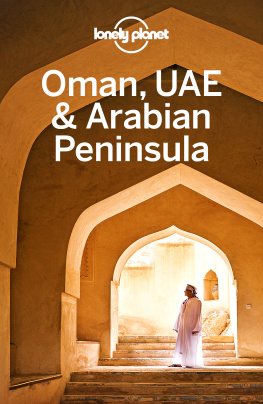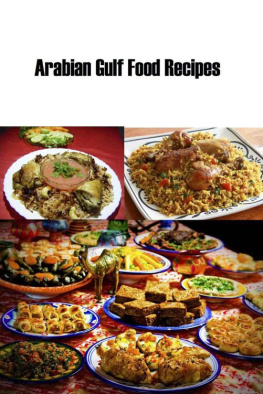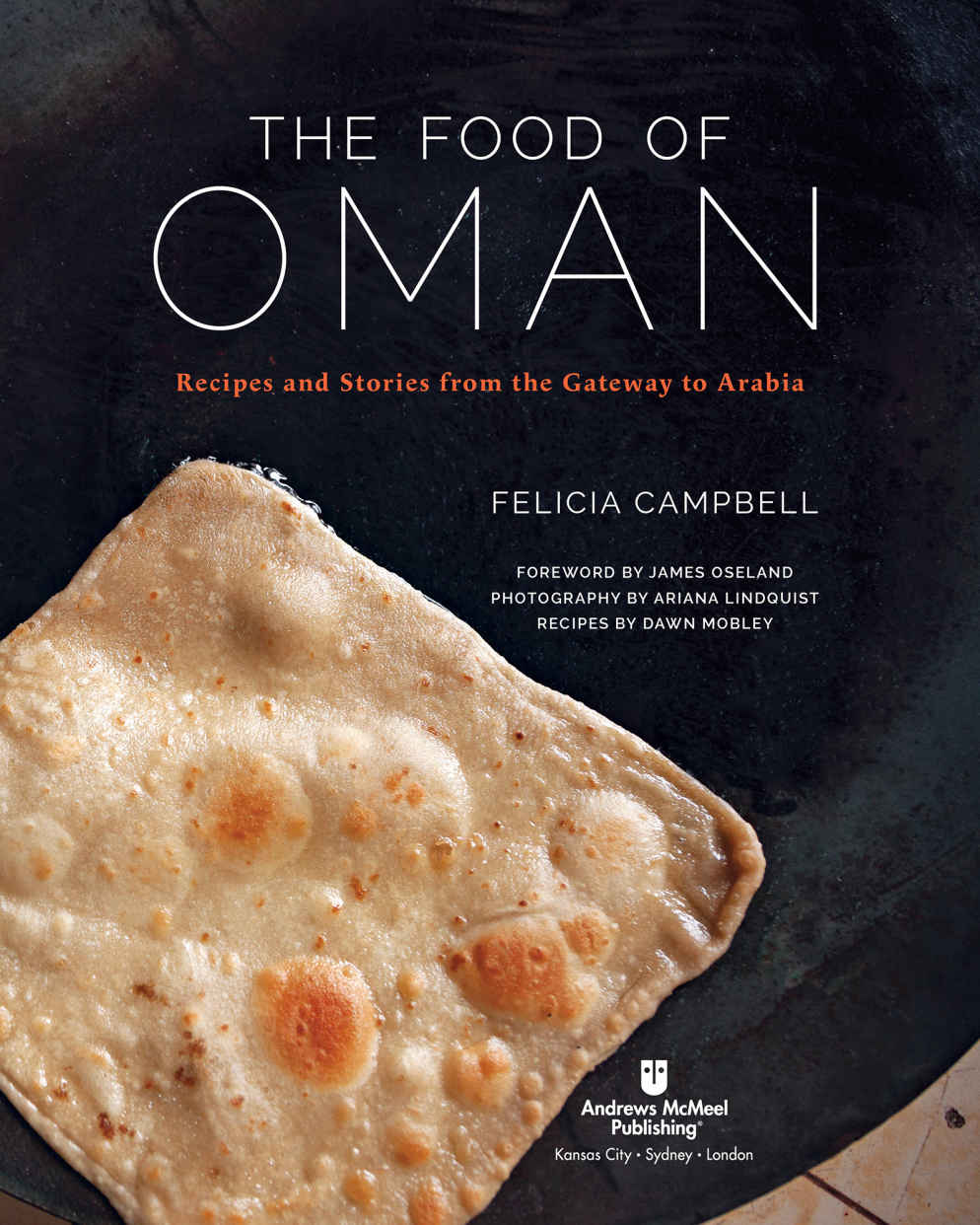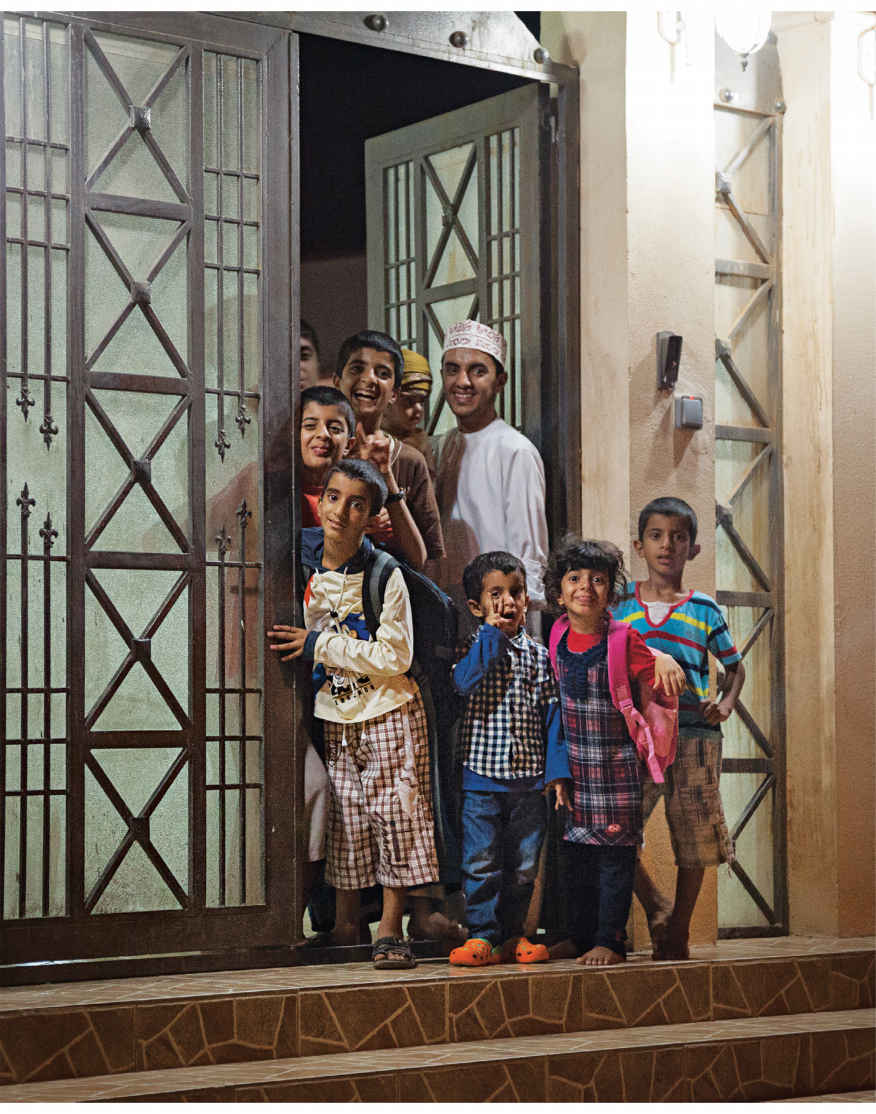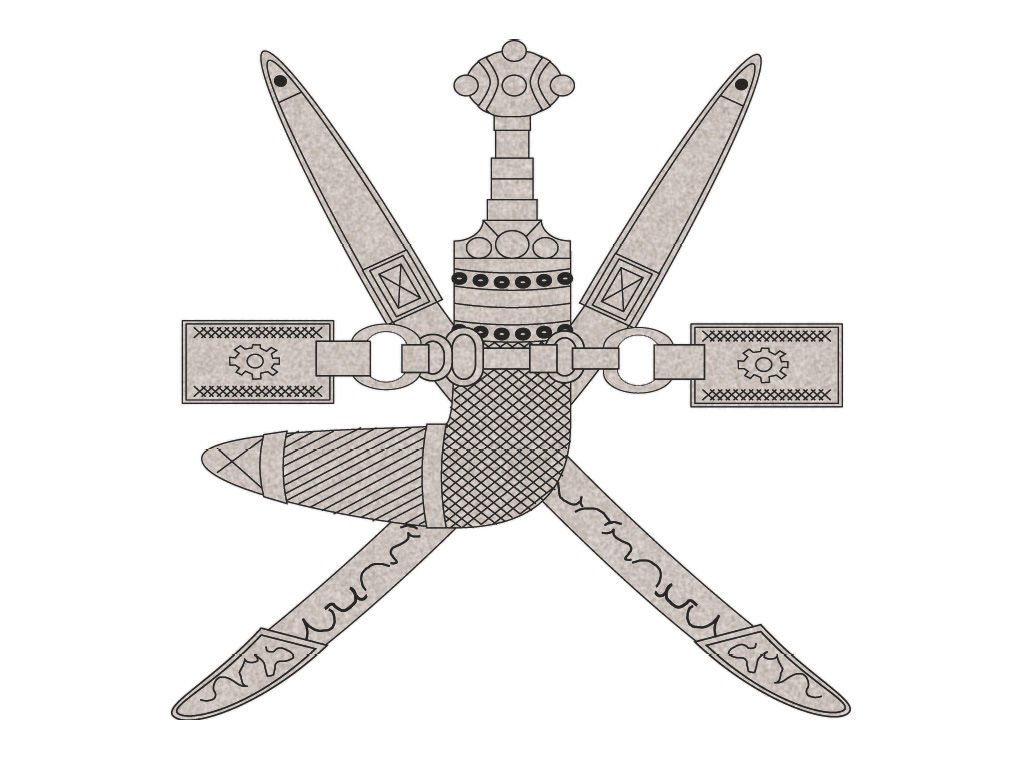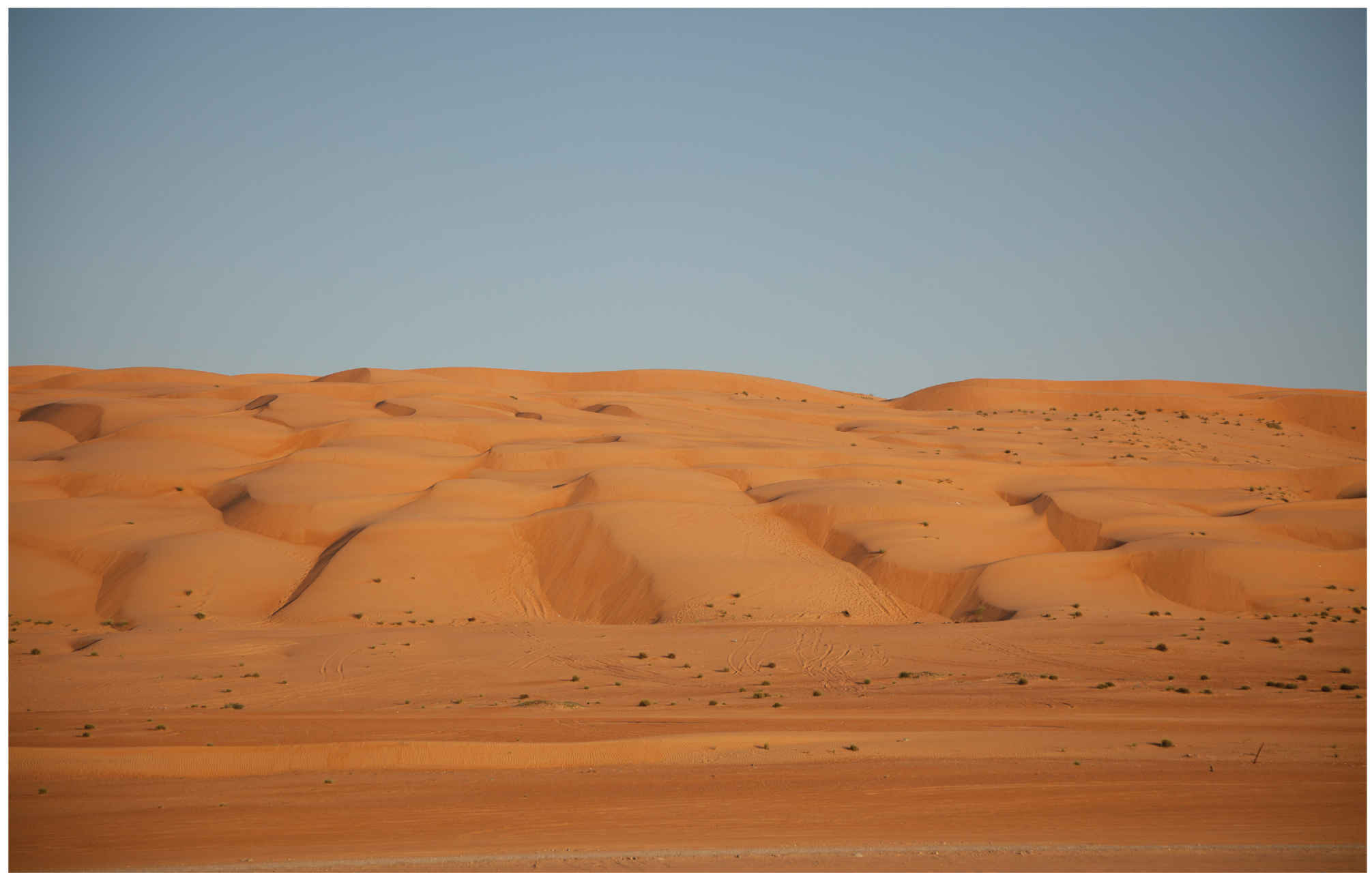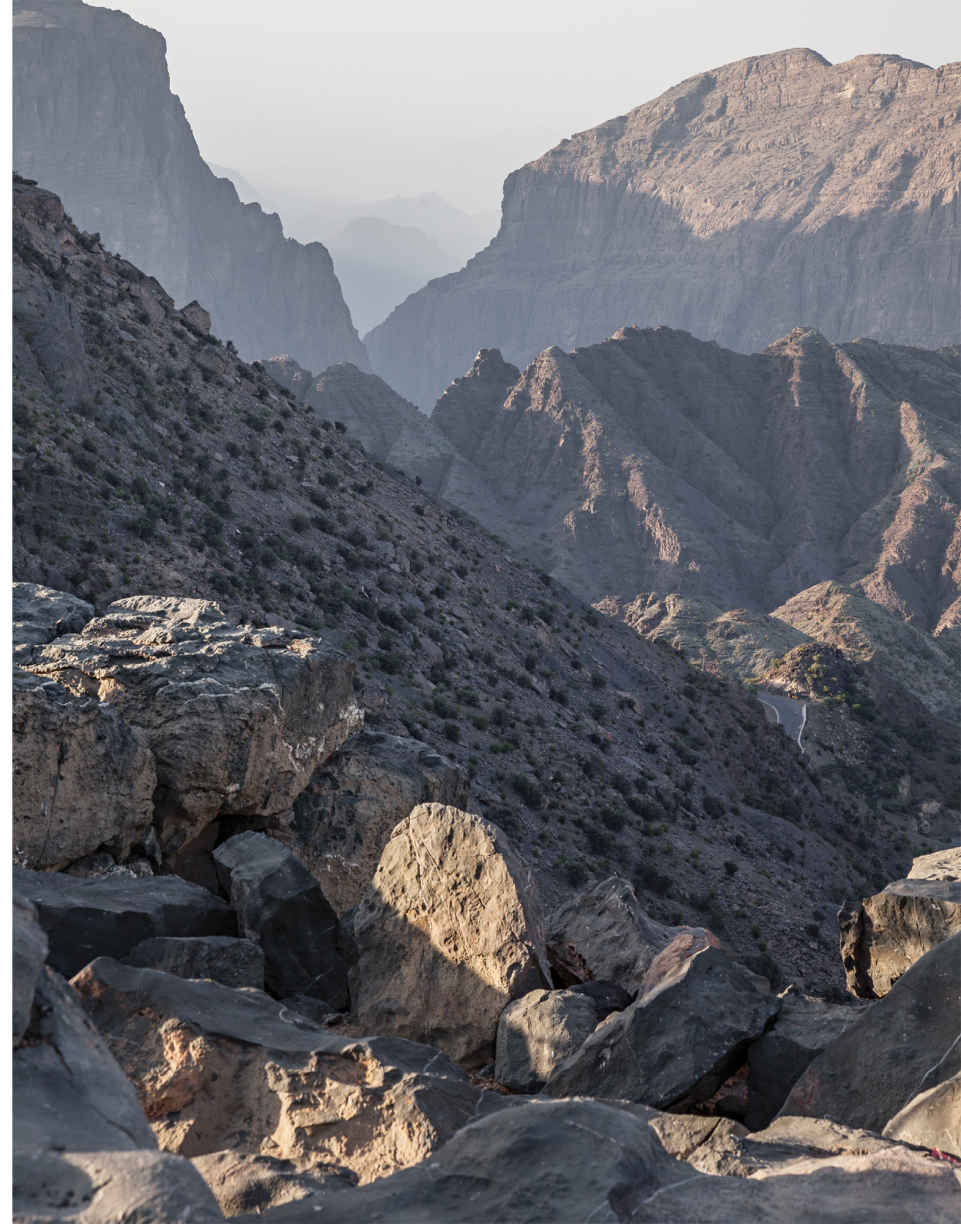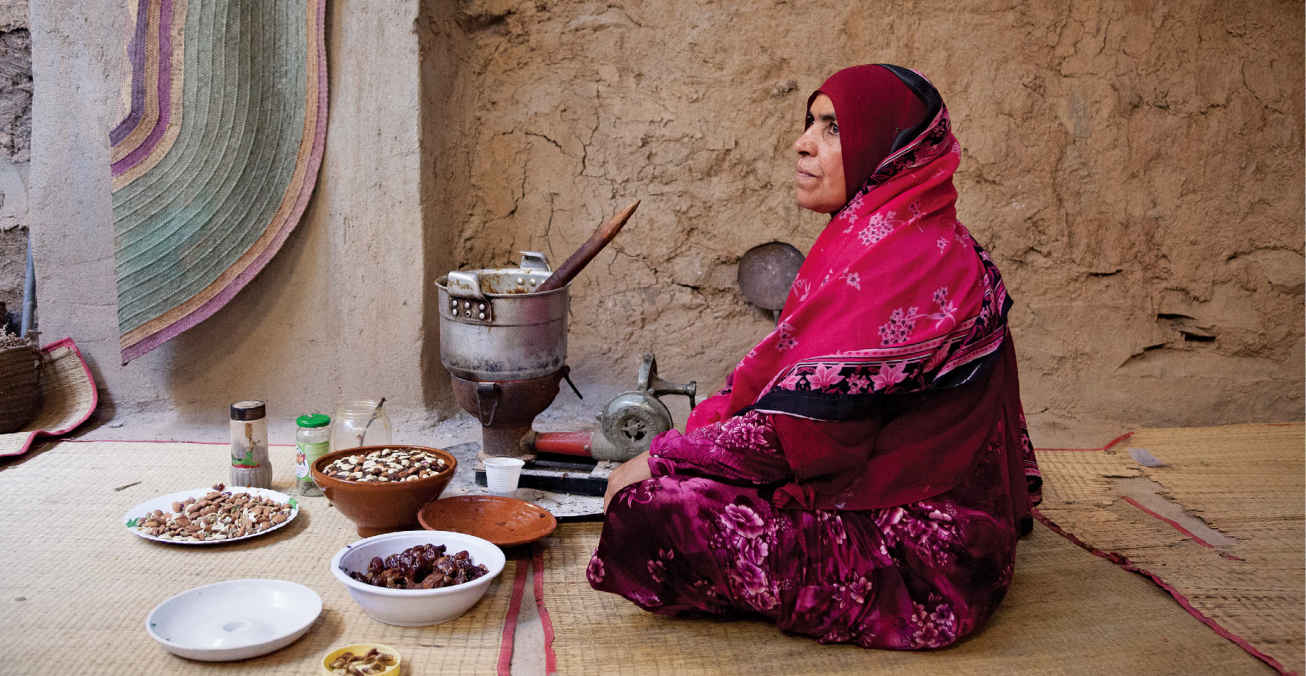This book is dedicated to the people of Oman who invited me into their kitchens, homes, and lives, introducing me to a world that captivated my imagination and my heart. As the flavors of this singular place transformed my palate, their graciousness, hospitality, patience, and rootedness in the world transformed my life.
Contents
THE OMANI PANTRY:
FROM MUSCAT TO NEW YORK
OMANI MEALS:
FRIENDS, FAMILY, AND SACRED SPACES
Foreword
Some people enter your life with a bang. Others saunter in more quietly, on cats feet. Felicia Campbell came into mine by way of the latter method. Shed been an intern for a number of months at Saveur , where I was editor in chief. But her presence hadnt registered too intensely for me until one day I needed help with the most menial of tasks: pinning page proofs to my wall. As Felicia and I worked together, we got to talking.
She was from California, she told me. Her parents were academics. She had moved with them to Colorado, where she dropped out of high school (like me) and enrolled in college early at CU Denver, where she had begun a pretty typical first semester. Then September 11, 2001, rolled around. And for Felicia, as for so many others, everything changed.
I was so upset by what I watched on TV that morning that I decided that I had to do somethingthough I didnt know what, at first, she said. The thing that came to me over and over again was: Join the army.
I stopped pinning proofs. I listened to her recount the extraordinary tale of joining the military at seventeen; learning how to repair helicopters; and, just after her nineteenth birthday, being sent with the first deployment of American soldiers to Iraq, where shecounter to all expectationsfell in love with the Middle East.
Against all odds, Iraqits people, its history, its foodresonated profoundly with her. After her tour of duty, a college education, and a stint in the restaurant industry, Felicia earned a masters degree in food studies, specializing in Arab foodways. The cultures and extraordinary cuisines of the Middle East became the focus of her work.
In the years after that first conversation, Ive gotten the chance to know Felicia much better: She was hired after her internship as my assistant and then graduated to a more senior position. Throughout it all, she continued to develop her knowledge of the Middle East, traveling there at every opportunity and championing the coverage of its diverse foods and culinary history in our pages.
On one trip, she made her first visit to Oman. I remember vividly her animated state when she returned.
Jim, its an amazing place, she said. And the food! Each dish practically tells the story of the ancient spice routes.
In the multiple trips Felicia made to Oman after that first one, her enthusiasm and knowledge for its cuisines blossomed and deepened. What would take most people decades to acquire in terms of culinary knowledge, Felicia packed into a few extraordinarily dedicated years.
I knew she was onto something profound when she invited me to spend a day testing recipes for some of the dishes that appear in this book. A group of dedicated Felicia fans gathered one chilly fall morning to help out. I was given the job of cooking the complicated Zanzibari Biryania recipe that required each element, from the spice blend to the rice to the rich sauce and pan-fried chicken, to be prepared separately and then layered before being finished with saffron-infused rose water.
I wont lie: It was a daunting task. But as I got deeper into the process, simmering the chicken in a spiced broth, frying onions, and toasting spices, I fell into a kind of wonderful trance. I began to see the biryani start to come together, what made it function, why it worked the way it did.
As we cooked, the kitchen filled with the most miraculous aromas. It was as if the shores of the Arabian Sea were drawing near, lapping at the door of the New York City kitchen. It was intoxicating.
At the end of the day, we sampled a dizzying array of foods: a savory chicken and rice porridge called . While Im proud to say the biryani was extraordinary (really, insanely delicious), so was everything else. I understood then what I know for certain now: Not only has Felicia crafted an essential book about a remarkable cuisine relatively unknown outside its native place, but she has also captured that cultures beautiful soul in its recipes.
James Oseland, editor in chief o f Rodales Organic Life and author of Cradle of Flavor
INTRODUCTION
Oman is not merely a place; it is an immersive, sensory experience. After the warmth of the sun and sultry ocean air, smell is perhaps the first sense ignited upon arrival in the capital of Muscat. Sweet vanilla- and orange-scented Abyssinian roses grow wild on the roadsides; woodsy oud, bright citrusy musk, and dark amber perfume and bahoor incense linger on the clothes of the people; and from crowded souks to the receiving rooms of homes throughout the country, frankincense smoke lends its ancient, velvety cover. In the kitchens tucked in the rear of cavernous villas or in the courtyards of mountain homes, bouquets of sizzling onions melting in oil, cardamom simmering in coffee and curries, and pungent cloves dancing in a medley of hot chile, coriander, ginger, and musky dried black lime play against the subtle backdrop of coconut milk bubbling with spinach or mashed green bananas.
The cursive sound of Arabic, from gentle murmuring at urban cafs to the cacophony of laughter, children happily shrieking, and women talking over one another in village kitchens, is interrupted only by the echo of the call to prayer, sung five times a day from minarets in cities and towns from Salalah in the south to Musandam at the northern tip of the Sultanate.
As singular as the sounds and scents are the visual juxtapositions: Jagged, black slate mountains jut out of the flat beige earth at sharp 45-degree angles; crisp, white adobe houses overlook the dark blue sea; golden sand dunes stretch to the powdery horizon; and in the south, rolling green hills are wedged between the flat, white desert of Rubal Khali, the Empty Quarter, and Salalahs lush, green oceanside cliffs.
The people themselvesmen in starched white, ankle-length dishdasha and colorfully embroidered kuma caps or wrapped mussar turbans and women in brilliantly colored dishdasha and scarves from India or elegant black abayas with delicate, sheer sheila scarveslook as diverse as the landscape, with complexions and features that reflect ancient trade connections between Arabia, East Africa, South Asia, and Persia.
The tastes of Oman reflect both Bedouin pragmatism and hospitality, and the curiosity and adventurousness of the ancient Indian Ocean seafarers. Typical Khaleeji (the Arabic word describing people and things from the Arabian Gulf) rice dishes are enlivened with ginger, cloves, cardamom, and tart black lime; Indian biryanis are subdued, becoming mild, more subtle versions of themselves; East African vegetables in coconut milk are made using richer, malty coconut milk powder. These tastes are reminiscent of many places, but distinctly Omani. I was seduced by the incredible distinctiveness of this place and the people there, whose food felt vaguely familiar somehow but was unlike anything Id ever had before.

